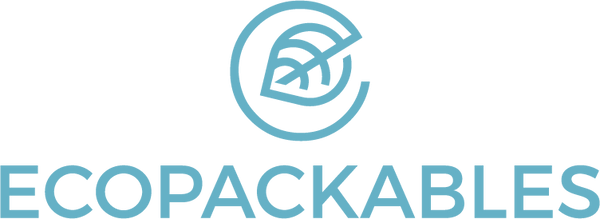There’s a lot to consider when it comes to food packaging, like compliance with FDA regulations, appealing design, and increasingly, sustainability. At Ecopackables, we’re here to help you navigate it all: from making sure your packaging meets legal requirements, to selecting the best materials, and clearly communicating sustainability information, including proper disposal—while helping your product stand out on the shelf.
FDA Labeling Essentials
Food packaging sold in the U.S. must comply with FDA regulations under the Food, Drug & Cosmetic Act and the Fair Packaging and Labeling Act. These rules require clear, accurate labeling of key information: product name, net quantity, ingredients, allergens, nutritional details, and manufacturer info. All of this must appear in specific places on the package—typically the principal display panel and the information panel—using legible fonts and formatting.
If your product contains allergens like peanuts or soy, they must be clearly disclosed. Nutrition Facts panels also need to follow standardized formatting, including specific nutrients like added sugars, saturated fat, and vitamin D.
Designing FDA‑Compliant Pouches
Good packaging design balances regulatory requirements with strong branding. Claims like “gluten-free” or “high in fiber” can help catch a shopper’s eye—but they also need to meet FDA criteria to be used legally. Proper placement, font sizes, and visual hierarchy matter not just for aesthetics, but also for compliance.
Compostable Laminates: Shelf Life Matters
Sustainable options like compostable films are gaining popularity, but they behave differently from traditional plastics. Compostable laminates often have a shorter shelf life—typically up to 12 months—especially in humid environments. This means packaging should include accurate “best by” dates and storage guidance to maintain food quality. If you're using certified compostable materials (like those meeting ASTM D6400 or EN 13432), it’s important to label them correctly and educate consumers on proper disposal.
Recycled Content & Food Safety
Incorporating recycled content is great for the environment, but it requires careful attention in food packaging. FDA regulations restrict the use of recycled materials in direct food-contact layers unless they’ve been explicitly approved. A common solution is to laminate recycled layers with a virgin food-safe barrier—ensuring safety while still reducing environmental impact. Any recycled content claims should be accurate and transparent to avoid misleading consumers.
How Ecopackables Can Help
We work directly with food brands to ensure their packaging is:
-
FDA-compliant and properly labeled
-
Designed with certified compostable or recycled materials
-
Shelf-stable and structurally sound for your product type
-
Communicating sustainability and disposal clearly and credibly
With the right strategy, your packaging can check every box—compliance, shelf appeal, and sustainability. While food packaging comes with unique challenges—barrier requirements, food safety regulations, and consumer disposal habits—every step toward more sustainable materials is meaningful. Whether it’s choosing compostable films, incorporating recycled layers safely, or improving end-of-life labeling, progress in this space is possible—and worth the effort.

